I have been working with Sylvain Weiller to implement his drift method of video capture into DSSR5 beta. This method moves your scope around a target feature while recording video. Stacking apps can integrate this video to produce an image of the whole scanned area. This effectively quadruples the area of your imaging sensor and also removes the dreaded Newton’s rings.
DSSR5 allows you to scan along single axes (right ascension or declination) or dual axes with the option of backlash take up. The dual axes mode moves around a rectangle 1>2>3>4>1 with a sawtooth edge profile (to eliminate stacking artefacts) like so:
We are still working out the best processing workflow to handle these scans so I have uploaded a full disk and detail scan (zipped AVI in Y800 codec) so others can experiment. Please let me know thru my user group or other groups I posted this link to on how you get on and what worked for you. The files are here:
Sylvain managed to process these files in Registax 5 before he went on holiday and his results are below. Notice the extra imaging area compared with the normal 1/4″ ccd field of view and the total absence of the Newton’s rings which were very obvious in the detail video.
Update July 13th
I had a go myself using AviStack and here are my uncropped results. Very close to a good result but I need to close up the missing pixels.
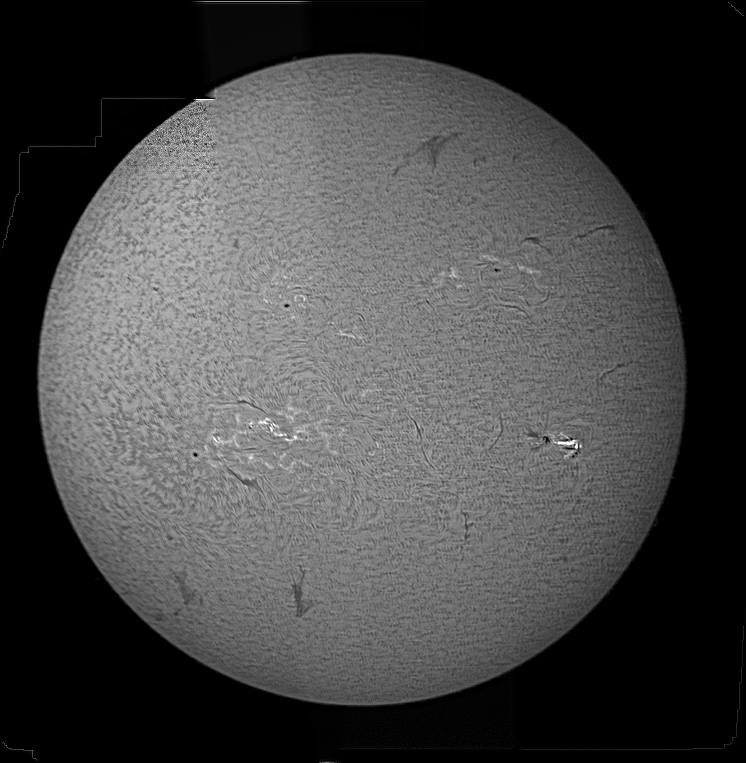
Andrew Cool of SkippySky noticed an interesting result from the AviStack processing results. The Frame Shift graph actually captures the scanning path with sawteeth very well. It also reveals that my mount needs to be more accurately aligned because the red and blue lines should end on zero.
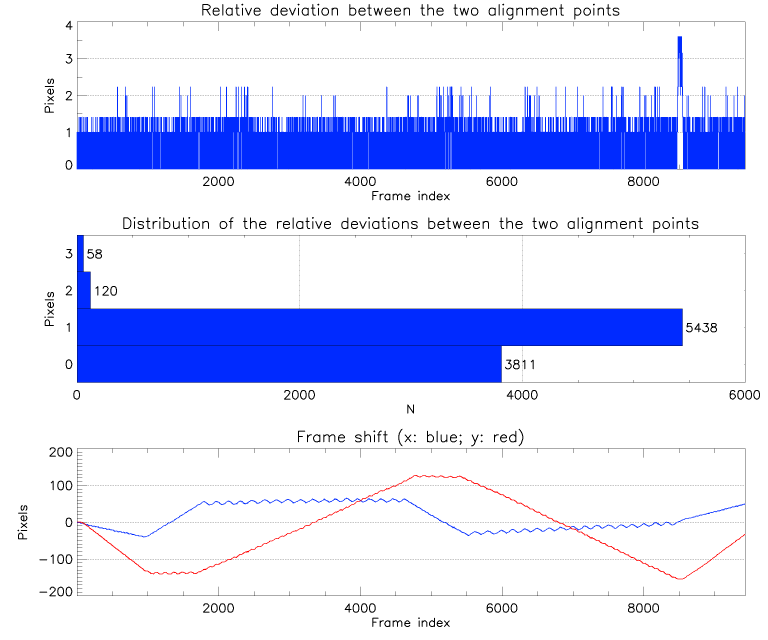
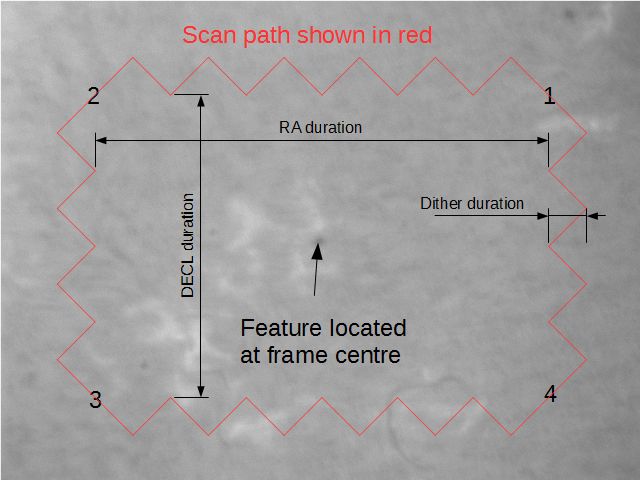
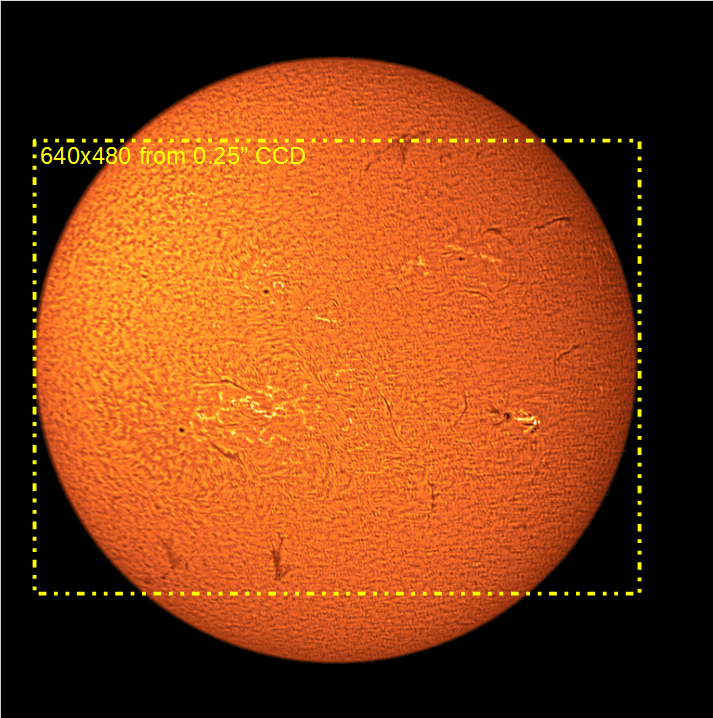
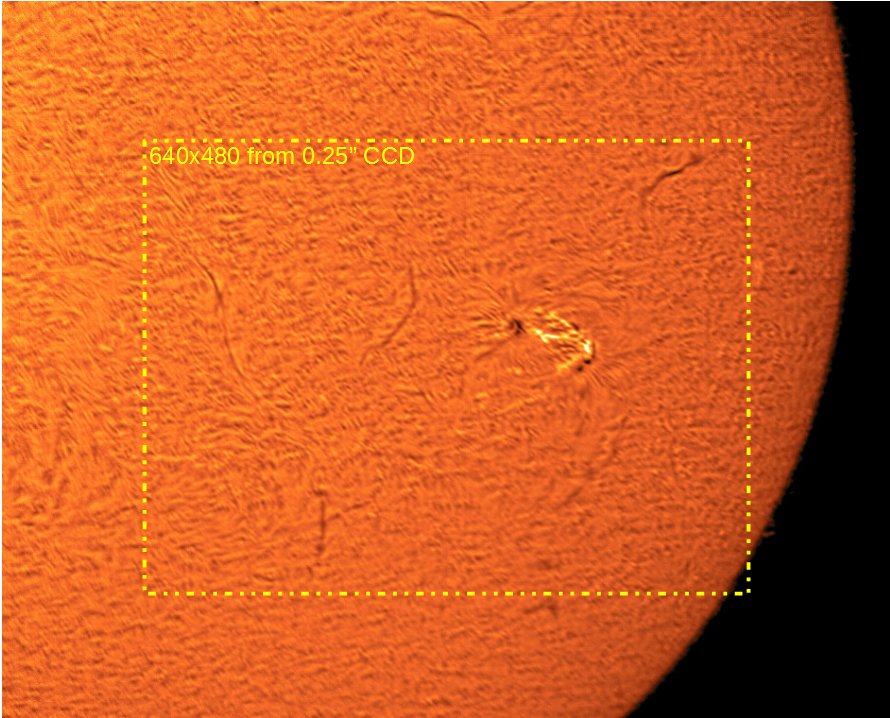
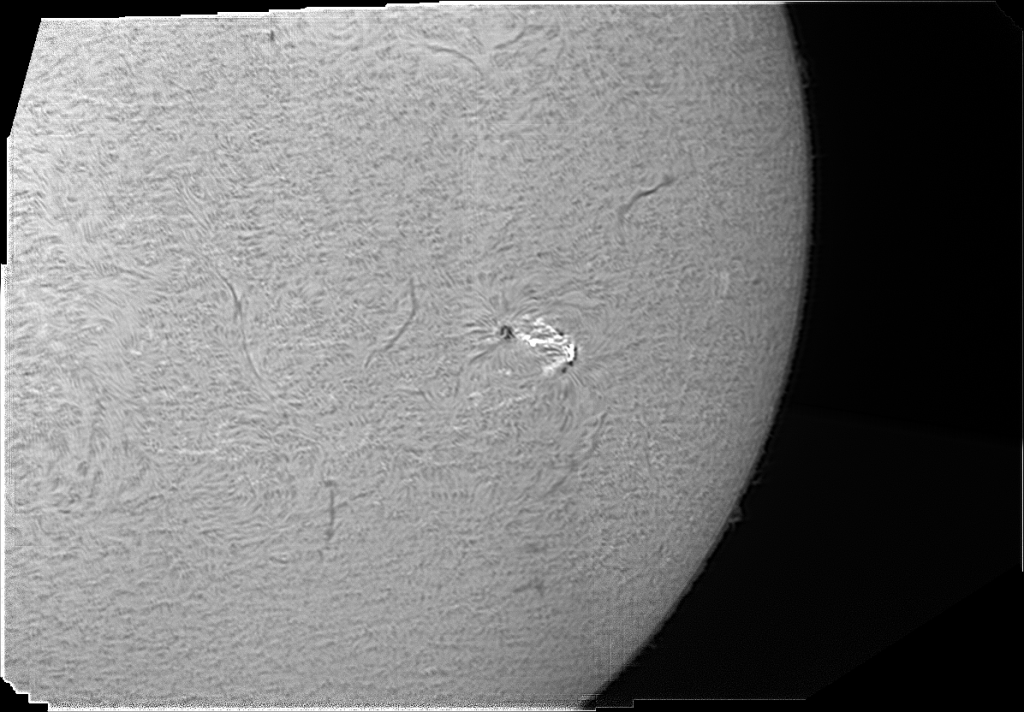
Sorry, the comment form is closed at this time.